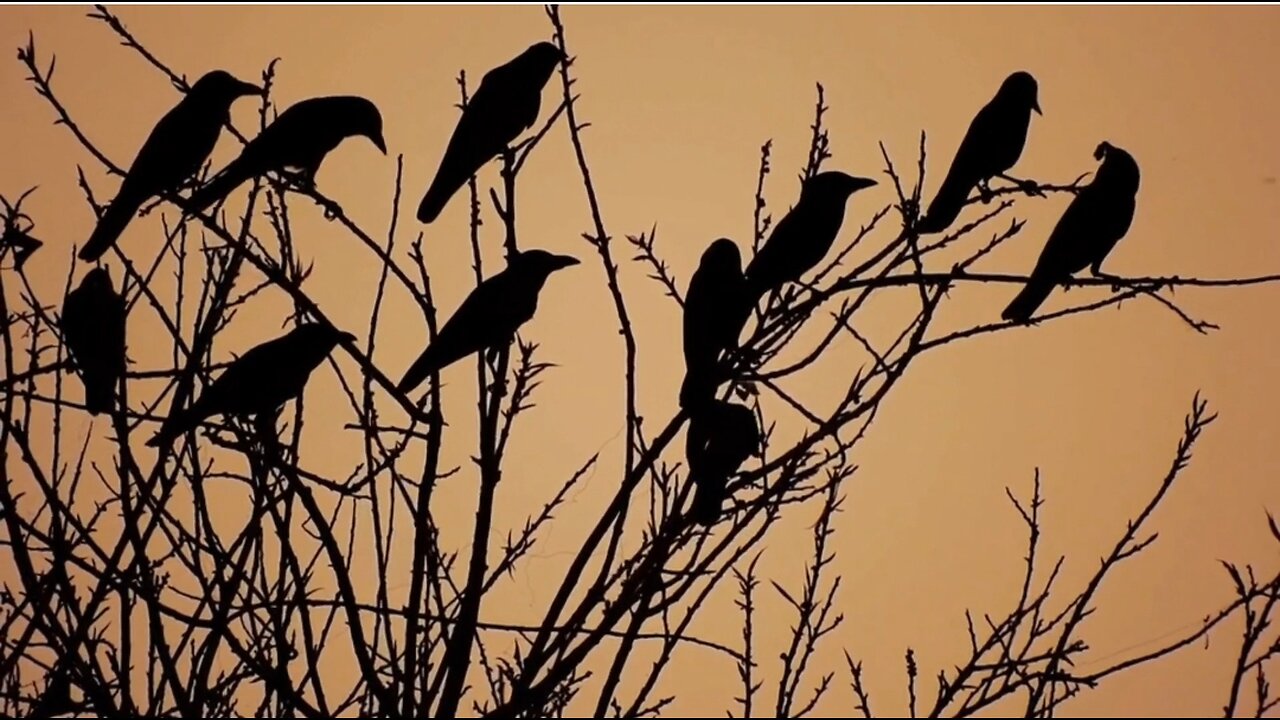Premium Only Content

"The World of Crows: Unveiling the Secrets of Nature’s Problem Solvers"
Crows are highly intelligent birds belonging to the genus *Corvus*, which includes around 45 species worldwide. They are part of the Corvidae family, which also includes ravens, magpies, and jays. Crows are known for their adaptability, problem-solving abilities, and complex social structures. Here's more about them:
### Physical Characteristics:
- **Size and Appearance:** Crows are medium to large-sized birds with a robust build. Most species have glossy black feathers, though some may have white or gray markings. They have strong, stout bills, black legs, and their eyes are usually dark brown or black.
- **Species Examples:** The American crow (*Corvus brachyrhynchos*), the carrion crow (*Corvus corone*), and the hooded crow (*Corvus cornix*) are some of the most well-known species.
### Intelligence:
- **Problem-Solving:** Crows are renowned for their intelligence. They can use tools, solve complex puzzles, and even plan for the future. Studies have shown that crows can recognize individual human faces and remember them for years.
- **Communication:** Crows have a sophisticated system of communication, using a variety of vocalizations to convey different messages. They can mimic sounds, including human speech, and use a range of calls to warn each other of dangers or to coordinate group activities.
- **Social Structure:** Crows are highly social birds that often live in family groups. They have a hierarchical structure within their groups and are known to engage in cooperative breeding, where non-breeding individuals help raise the young.
### Behavior:
- **Diet:** Crows are omnivorous and have a highly varied diet. They eat everything from insects, small animals, and eggs to fruit, seeds, and carrion. They are also known to scavenge in urban areas, feeding on human food waste.
- **Tool Use:** Crows are one of the few non-human animals that use tools. They have been observed using sticks to extract insects from tree bark, dropping nuts on roads to crack them open, and even bending wires to create hooks for fishing out food from hard-to-reach places.
- **Roosting:** Crows often gather in large communal roosts, especially in the winter. These roosts can number in the thousands and provide safety in numbers from predators.
### Habitat and Distribution:
- **Global Presence:** Crows are found on every continent except Antarctica. They are highly adaptable and can thrive in a wide range of environments, from rural farmlands and forests to urban cities.
- **Nesting:** Crows build their nests high in trees, using sticks and twigs. The nests are lined with softer materials like grass and feathers. They typically lay 3-6 eggs, which are incubated by the female while the male provides food.
### Cultural Significance:
- **Mythology and Symbolism:** Crows have a prominent place in various cultures and mythologies. In some cultures, they are seen as symbols of death or bad omens, while in others, they represent intelligence, cunning, or even divine messengers.
- **Folklore:** Crows have been featured in folklore around the world, often depicted as tricksters due to their clever nature. They also appear in literature, art, and popular culture as symbols of mystery and the supernatural.
### Conservation Status:
Most crow species are not currently endangered and are classified as of "Least Concern" by the IUCN. Their adaptability to human environments has allowed their populations to remain stable or even grow in some areas. However, habitat destruction and persecution in some regions can impact local populations.
Crows are fascinating birds with remarkable cognitive abilities and social behaviors. Their adaptability and intelligence make them one of the most successful bird species in the world.
-
 2:12:46
2:12:46
Price of Reason
1 day agoAmber Heard BACKS Blake Lively Lawsuit Against Justin Baldoni! Is Disney CEO Bob Iger in TROUBLE?
65.1K24 -
 1:01:17
1:01:17
The StoneZONE with Roger Stone
19 hours agoChristmas Edition: Why the Panama Canal is Part of the America First Agenda | The StoneZONE
135K47 -
 18:12:15
18:12:15
LFA TV
1 day agoLFA TV CHRISTMAS EVE REPLAY
148K19 -
 13:32
13:32
Scammer Payback
20 hours agoChanging the Scammer's Desktop Background to his Location
16.8K4 -
 4:21
4:21
BIG NEM
22 hours agoNikola Tesla's Secret to Cultivating Creativity & Genius
12.5K1 -
 15:03
15:03
The Anthony Rogers Show
1 day agoAnthony Rogers - Live at Cusumano's Pizza (Upstairs)
9.98K1 -
 4:33:48
4:33:48
tacetmort3m
1 day ago🔴 LIVE - THE ZONE KEEPS PULLING ME BACK - STALKER 2 - PART 15
75K13 -
 22:45
22:45
Brewzle
1 day agoI Went Drinking In A Real Bourbon Castle
53.8K4 -
 48:36
48:36
PMG
2 days ago $5.14 earned"Parkland Parent Speaks Out On Kamala Harris Using Victims"
43.5K12 -
 4:06
4:06
The Lou Holtz Show
1 day agoCoach Lou Holtz’s Heartfelt Christmas Message 🎄 | Family, Faith & Notre Dame Spirit 💚 #christmas
31.6K1